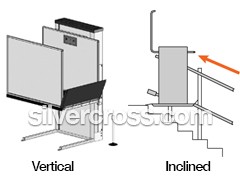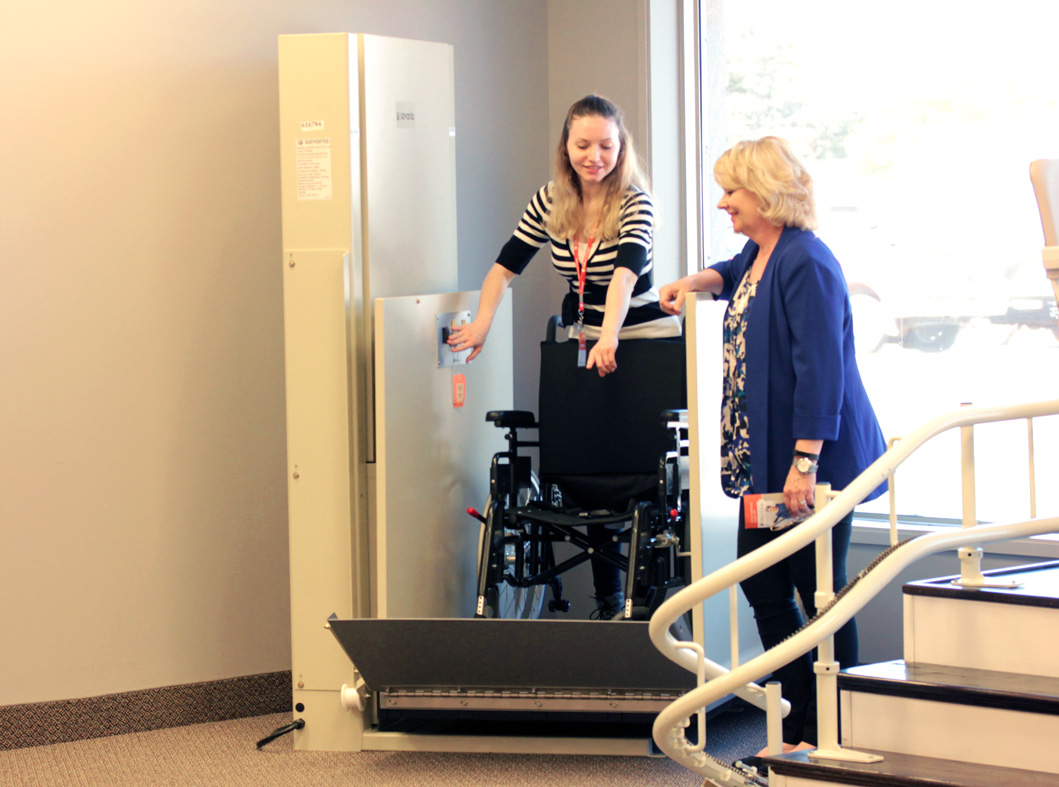Home » Wheelchair Lifts » How to choose a Wheelchair Lift
Home » Wheelchair Lifts » How to choose a Wheelchair Lift
1. When to choose an inclined platform lift or a vertical platform lift?
Inclined platform lifts are usually installed when you cannot install a vertical lift. Overcoming stairs can only be done by traveling over them.
Vertical platform lifts require additional space to travel up and down and may require a hoist-way, a pit or concrete pad to secure the lift.

2. Can I install a home wheelchair lift in a public building?
Anything other than a private home will require a commercial/public lift. Public lifts have different codes and requirements. Places of worship, group homes and schools require commercial lifts.
3. Can I install a wheelchair lift outside?
Vertical platform lifts are often installed outside to provide access from a driveway or ground level to a door that opens to the interior or near an interior accessible entrance. For outside use, be sure to choose a unit made to withstand harsh weather, and be sure to maintain your lift according to the owner’s guide.
4. What preparation is needed for a wheelchair lift installation?
Installing a wheelchair lift to access a porch from the ground level will also require a proper, safe gate at the top landing. Site preparation and finishing is a critical to a safe and long-lasting product installation. Choose a specialized and trained wheelchair lift dealer for your project.
5. What is a good brand of wheelchair lifts?
Wheelchair lifts should comply with specific code set by industry associations, so be sure to choose a recognized brand name. Companies with a long history also make lifts for long-term durability and reliability. A product that does not work is more than just inconvenient. See the wheelchair lift comparison chart.

Get a quote!
Founded in 1993 when the Internet was just starting to become important in day-to-day life, Silver Cross built its roots as relationship company. It formed partnerships with experienced dealers and installers of stair lifts, elevators and other mobility equipment in order to bridge the gap between the prospective customer and a pre-qualified, knowledgeable local dealer.